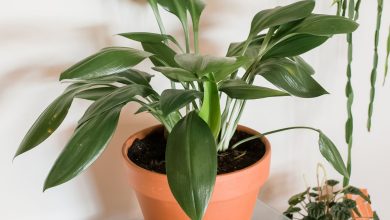Bonsai: [Characteristics, Utility, Types, Meaning and Purchase]
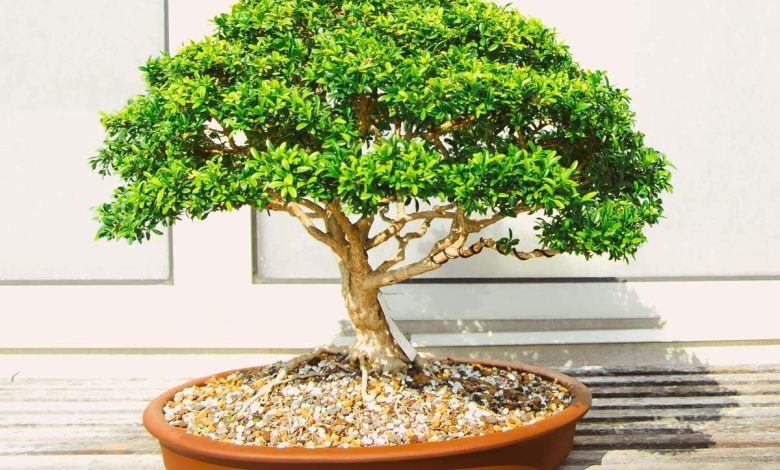
Important points about Bonsai:
- What are they? A bonsai is a tree that naturally reaches a large size, but under this technique it grows to scale, almost tiny.
- What are they for? The main benefit that everyone associates with bonsai has to do with the decorative aspect. However, on a personal level it offers many more benefits.
- What types are there? Bonsai are usually classified based on two conditions: size and shape. In this post we mention the best known according to this classification.
- What meaning do they have? Bonsai represents a work strategy associated with the mind and meditation.
- Why do bonsai remain small? Bonsai remain small thanks to the application of pruning and wiring techniques.
- Which bonsai is the easiest to care for? There are species that are easier to care for than others. If you are starting out in this world, opt for species such as ficus, jade and junipers.
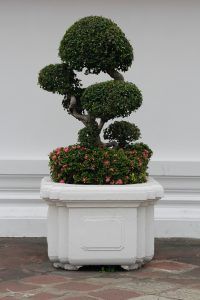 Bonsai are among the most spectacular trees we could have, even indoors, elegantly decorating any corner.
Bonsai are among the most spectacular trees we could have, even indoors, elegantly decorating any corner.
These versions of large miniature trees are capable of stealing anyone’s heart with their beauty and charm.
Surely your heart beats fast when you think of one of them and you would like to find out about everything that this topic encompasses.
And for that we are here, making your life easy, giving you all the information that you will find below. Shall we review it?
What are bonsai?
A bonsai is a tree that naturally grows large, but under this technique it develops to scale, almost tiny.
Some people may think that they are not real plants. The reality is that they are, with total accuracy to its original version.
This means that they keep all the structure, branches and other visual aspects of their species, without reaching many meters in height.
And this is achieved thanks to a work technique that consists of reducing the growth space of the roots, as well as that of the crown through scheduled pruning.
Did you know…?Bonsai is said to be one of the oldest horticultural activities, having originated in China during the Han dynasty (206 BC – 220 AD).
Many people have a misconception of what bonsai really is. The typical question that many people ask themselves: «Are bonsai trees their own species?»
No, bonsai is a kind of craft or living art.
Techniques including shallow planting, pruning, defoliation, grafting, and root thinning, along with wiring trunks and branches into desired shapes, help create the look of a miniature mature tree.
With proper care, a bonsai can last for centuries, but even a relatively young plant can give the illusion of being many years old. The Lars Anderson Bonsai Collection at the Arnold Arboretum in Boston has some bonsai from the 18th century.
What are bonsai used for?
The main benefit that everyone associates with bonsai has to do with the decorative aspect. The reality is that on a personal level it offers many more benefits such as:
- Natural contact: nature is capable of giving us a great connection to the tranquility and beauty that it emanates and bonsai are special to fulfill this objective, even more so when there is little time available to go for a walk in parks or protected areas.
- Patience and concentration: Making a bonsai grow and remain healthy and beautiful requires interest and work on the part of its owner. Being a job that requires attention, you will be improving your ability to concentrate and patience.
- Attention to detail: a person can visit your house one day and come two months later and maybe see your bonsai just the same. But you will be able to notice those small changes that are taking place day by day and that will surely fill you with emotion.
- Personal satisfaction: a beautiful bonsai is the product of the perseverance and care that you have given it throughout its development. As it is a goal to be fulfilled, when you have it, it is definitive that you will enjoy said success.
- Air with better quality: this factor depends a lot on the type of species you have chosen. That is why it is so important that you inform yourself well first. Some species help purify the air, which will help you in everything related to health.
What types of bonsai are there?
Bonsai are usually classified based on two main conditions: size and shape. Let’s see each one of them.
Bonsai according to size
- Shito: is the smaller version. The height of these bonsai does not exceed 5 centimeters. They are unusual and usually have the most amateurs and experienced in this task.
- Mame: it is not one of the most popular either because it barely reaches 15 centimeters in height.
- Shohin: are those bonsai that cover a growth range of 15 to 25 centimeters. They are the most popular because that structure is easily achieved. Therefore, they are usually used for those who start in the practice of making bonsai.
- Komono: in this case, the bonsai covers a height from 25 to 30 centimeters, so it is also common to see them and is good for beginners.
- Chumono: they are larger bonsai, between 30 and 60 centimeters. Although it might seem that they are easy to grow, the reality is that this is not the case. Many years of dedication and care are required to reach that size.
- Omono: is the giant bonsai. Its size occupies 60 to 120 centimeters in height and is very characteristic in certain spaces because it is used in garden design.
Bonsai according to shape
- Chokkan: it has a structure with a vertically straight trunk that remains thick at the base, but becomes smaller as it reaches the top.
- Moyogi: Moyogi trunks are also vertical, but have a curved shape.
- Shakan: they have 3 characteristics of their own: more or less visible roots, a triangle-shaped crown and a trunk that has an inclination of 45º.
- Kengai: they are inclined bonsai that stand out because the cup is lopsided and its lowest part is at the height (or below) of the container.
- Fikinagashi: they are trees that have the trunk and branches inclined, as if they were worked by the wind.
- Literati: the work with this bonsai is concentrated on the trunk, which is intended to look prominent and stylized. To do this, the branches of the crown are greatly reduced.
- Yose-ue: the idea with these bonsai is to recreate a miniature forest. To do this, different species are planted in the same container.
What meaning do bonsai have?
Bonsai is from Asian cultures, between Japanese and Chinese, to refer to a symbol of eternity.Due to this reason, bonsai represents a work strategy associated with the mind and meditation.
How is a bonsai made?
The steps to make a bonsai are as follows:
- Define the species and the form from which you will start the formation of your bonsai. This is a transcendental decision for reasons of time. A bonsai from seed can take around 5 years to form, while an advanced one can be produced in 1 or 2 years.
- Use recommended pruning techniques to form bonsai. Although each species has a different structure, there are certain actions that are more or less common in all cases. For example, any branch that looks weird should be removed. In addition, you will have to have the necessary material to achieve cleaner cuts and not damage the total structure.
- Adjust the wiring system according to the shape you want to give each of the branches. This technique helps to achieve the forms that we mentioned above in the types of bonsai.
- Apply all the care techniques so that the bonsai is healthy and prosperous. Here the irrigation is counted, the transplant that must be done regularly, the fertilizations, etc.
Why do bonsai remain small?
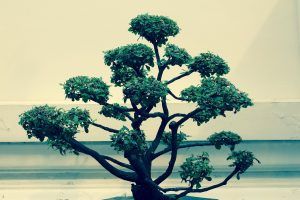 Bonsai remain small thanks to the application of pruning and wiring techniques.
Bonsai remain small thanks to the application of pruning and wiring techniques.
Also, a strategy that helps avoid a large growth is to use special pots for bonsai.
These have the condition of being wider than tall, which encourages the roots to expand horizontally and not vertically. In this way, the bonsai growth is wider than it is tall.
What should be taken into account when buying a bonsai?
The key aspects for the purchase of a bonsai to be considered successful are:
- That it be a species that adapts appropriately to the climate where it will be. Take into account that the environment is very important to have bonsai in perfect condition. It also ensures the level of demands that the species has for your level of experience as a bonsai keeper.
- Check the condition of the bonsai. In stores you can find from seeds or cuttings, pre-bonsai, to already advanced specimens that you will have to work with pruning at once.
Which bonsai is the easiest to care for?
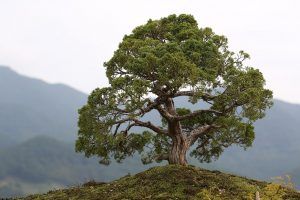 There are species that are easier to care for than others and that are recommended for those who are just starting out in this world.
There are species that are easier to care for than others and that are recommended for those who are just starting out in this world.
If this is your case, bet on versions such as ficus, jade and junipers. These have the redeeming characteristics of enjoying rapid growth.
In addition, they manage to develop a dense and beautiful foliage that will fill you with a lot of emotion.
Below we show you a list of the ideal plants for beginners if you want to plant your own bonsai.
What is the ideal place for bonsai?
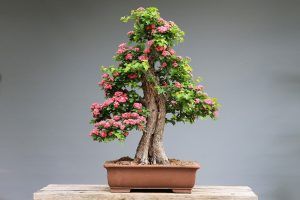 Bonsai are plants that need to remain constant around the conditions of their environment in order to be healthy and beautiful.
Bonsai are plants that need to remain constant around the conditions of their environment in order to be healthy and beautiful.
This implies that you have to decide on the ideal space taking into account their lighting needs, since they constantly appreciate direct sun.
And, later, avoid changing their space because it can cause damage to their structure.
Where should bonsai be placed according to Feng Shui?
The use of bonsai indoors by Feng Shui techniques is becoming more and more widespread, although sometimes it seems to go against its principles. The reason is that being a tree species that is subject to human intervention, it deprives the natural energy cycle.
However, its value to the environment is recognized, so ideally it should be located in a corner facing south, east or southeast. Bonsai are the natural touch that you can give to your home and enhance all the beauty of the environment.
Although at first you may consider that it is too much work for you, do not despair because you will surely get a great result soon.
Can a bonsai be created from any plant?
Almost any tree or shrub can be made into a bonsai. The key is to prune the roots and foliage so that the plant becomes (or will be pruned) dwarfed.
Specifically, bonsai are created from species of woody- stemmed perennial trees or shrubs that produce true branches and can be grown to remain small by confinement in pots with crown and root pruning.
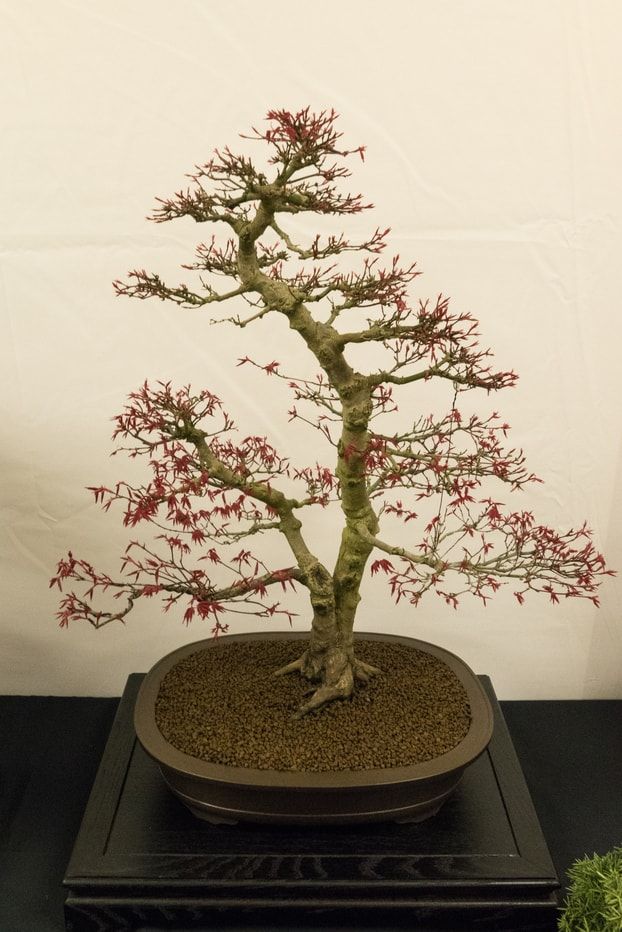
What are the best species of plants to make a bonsai if I am a beginner?
We tried an azalea once and it didn’t respond well to having its roots trimmed and put in such a shallow pot. She died shortly after
Ficus is probably the easiest to grow if you are a beginner; tolerates low humidity indoors.
Here is a short list of good specimens for bonsai:
- Ficus (many species).
- Crassula (jade plant).
- Carmona (tea plant).
- Schefflera.
- Calamondin.
- sand pear tree
- Bougainvillea.
- Gardenia.
- Jacaranda.
- Jasmine.
- Grenade.
- Chinese elm.
- Olive.
- Rosemary.

Ancient tradition called for going back to nature to find your potential bonsai, but today, all you have to do is head to your local nursery or greenhouse to find a bonsai-worthy plant.
How long does it take to grow a bonsai?
It is advisable to arm yourself with patience.
It may take 4-6 months to start looking pleasing to the eye. To prevent a branch from breaking, hold onto the wire to remove it instead of trying to unwrap it from the plant.
bonsai care
The shape of your bonsai depends on the material you use.
Some plants, such as jade, are too soft to shape with wire and will need to be pruned properly.
After deciding on the look you want to achieve, prune the branches starting at the base of the tree to expose the trunk.
The root mass may have to be reduced to fit the new container.
If the roots are cut back drastically, the top growth will also need to be cut back.
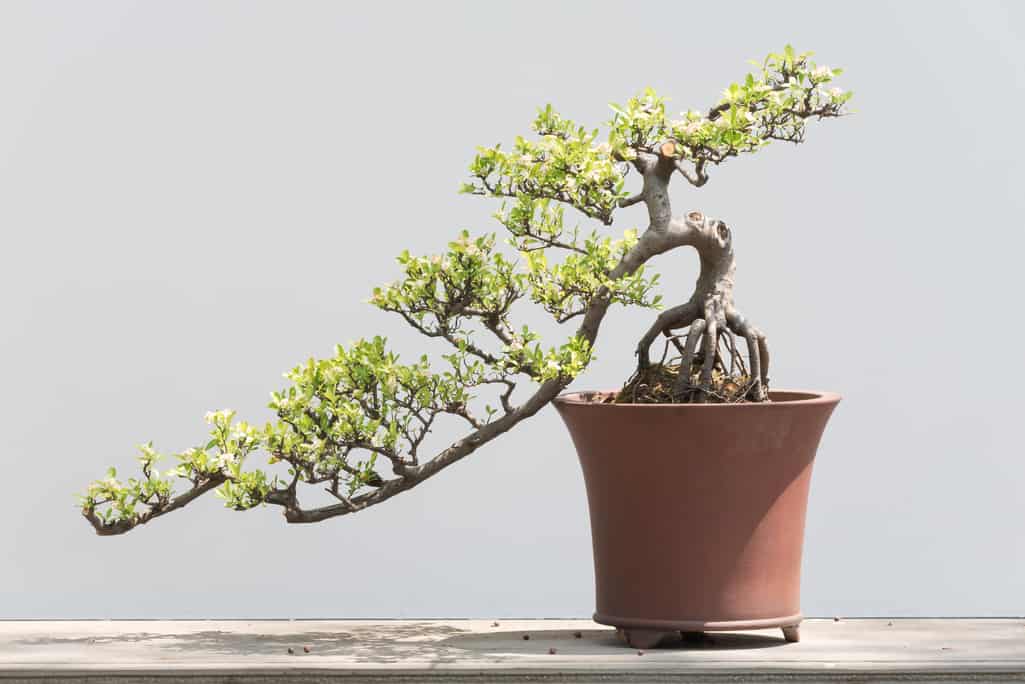
When the roots are freshly cut, the plant will need to be kept out of the sun while it recovers. Flexible branches and trunks can be wrapped with wire to give them the proper shape.
With such a small root ball, proper watering is essential to maintain the growth and health of your bonsai.
Feel the soil and water when it feels dry just below the top.
Water with a hose sprayer until the soil is saturated or submerge the entire pot in water up to the brim.
Either way, let the excess water drain off the freshly watered plant, as sitting in a wet saucer can cause root rot.
Fertilize with a specific liquid bonsai fertilizer, diluted to half strength, twice a month during active growth – April to September – and reduce to once a month from October to March.
How do we style our bonsai?
When caring for a bonsai, care must be taken to maintain miniaturization, suggest age, and meet the aesthetic goals of the artist.
Stylization of trees is also done on a larger scale in other practices such as topiary and niwaki. In bonsai, however, the artist has close control over every feature of the tree, because it is small and (in its container) easy to move and work with.
The larger scale of full-size trees means your style may be limited to pruning and shaping the outer bulk once per growing season, never pruning inside the canopy or bending and shaping individual branches.
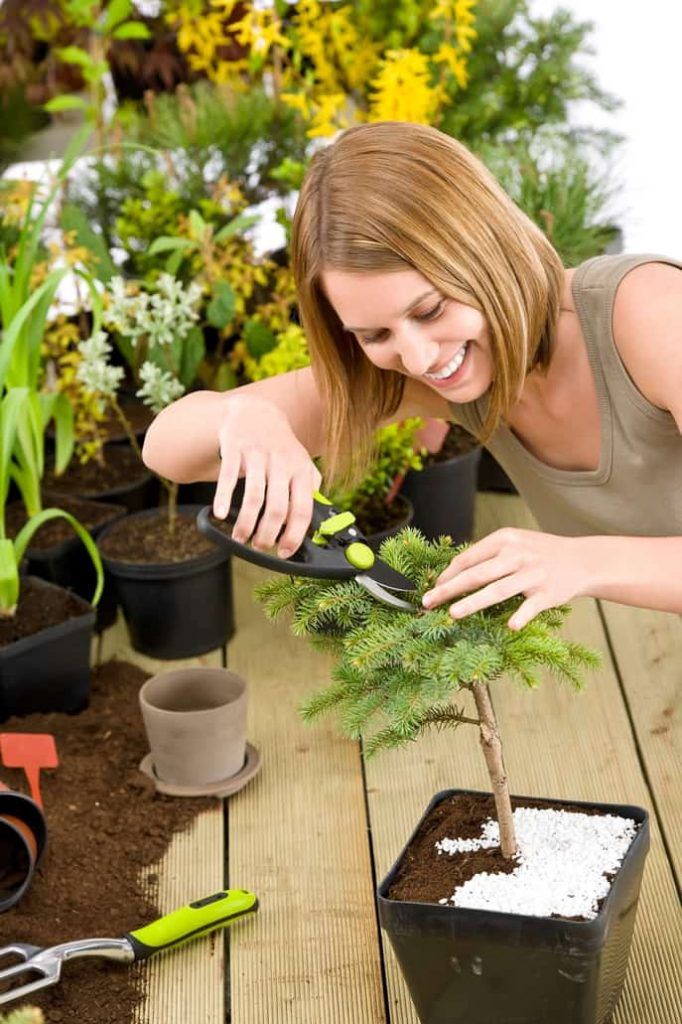
By contrast, in a bonsai being prepared for display, each leaf or needle may be subject to a pruning or retention decision, and each branch and twig may be shaped and wired into place each year.
Given these differences in scope and purpose, bonsai styling uses a number of styling techniques that are unique to bonsai or (if used in other forms of plant cultivation) applied particularly well to meet the goals of bonsai development.
leaf trimming
This technique involves the selective removal of leaves (for most deciduous tree varieties) or needles (for conifers and some others) from the branches of a bonsai.
A common aesthetic technique in bonsai design is to expose the branches of the tree below the clumps of leaves or needles (sometimes called «pads») by removing downward-growing material.
In many species, especially conifers, this means that any leaves or needles protruding below their branches must be trimmed.
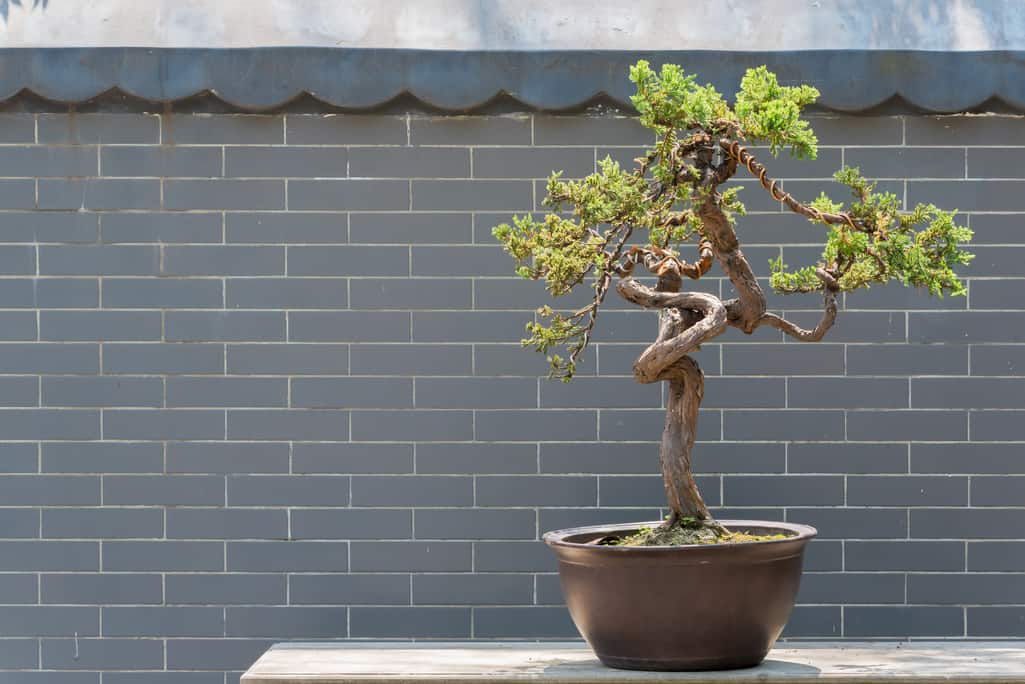
In some varieties of conifers, such as spruce, the branches bear needles from the trunk to the tip, and many of these needles can be trimmed away to expose the shape of the branch and bark.
Needle and bud trimming can also be used in conifers to force regrowth of old wood, which may not occur naturally in many conifers.
Along with pruning, leaf trimming is the most common activity used for bonsai development and maintenance, and the one performed most frequently throughout the year.
Pruning
The small size of the tree and the dwarfing of the foliage are the result of pruning of the trunk, branches, and roots.
Pruning is often the first step in transforming a collected plant specimen into a bonsai candidate. The upper part of the trunk can be removed to make the tree more compact.
Major and minor branches that conflict with the designer’s plan will be removed entirely, and others may be shortened to fit the intended design.
Pruning that is carried out later in the bonsai’s life is usually less severe and may be done in order to increase branching of the branches or encourage the growth of unpruned branches.
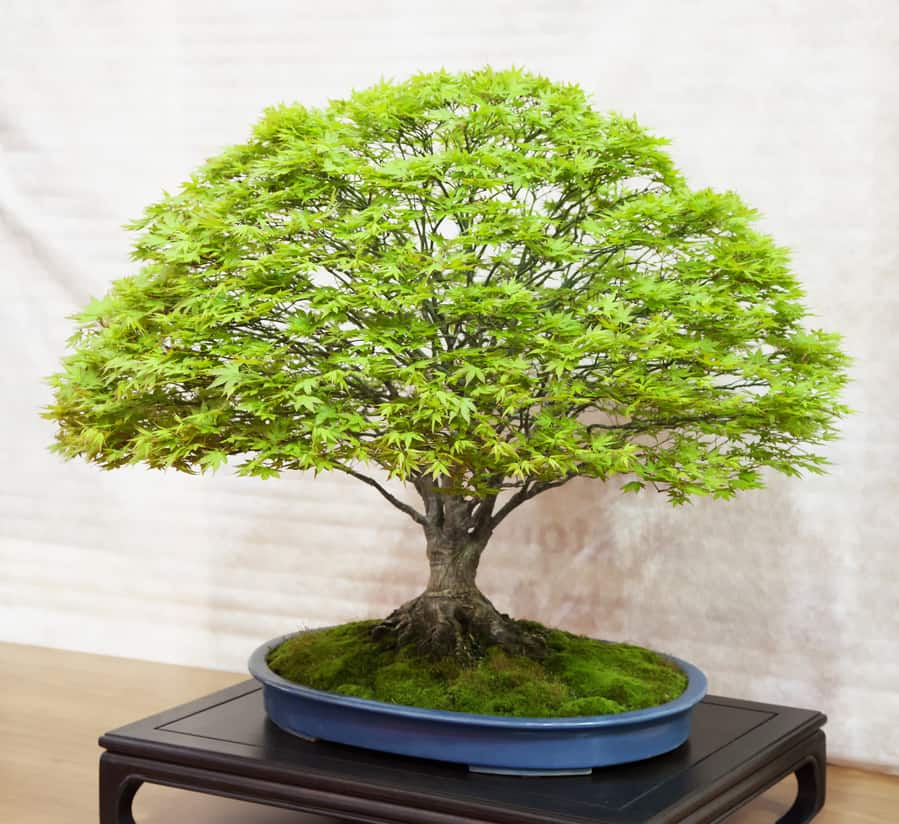
Although pruning is an important and common practice in bonsai, it must be done carefully, as improper pruning can weaken or kill trees.
However, careful pruning throughout the life of the tree is necessary to maintain the basic design of a bonsai, which can otherwise disappear behind the uncontrolled natural growth of branches and leaves.
Cabling
Extensive wiring can be seen on this bonsai specimen.
Wrapping the branches and trunks with copper or aluminum wire allows the bonsai designer to create the desired overall shape and detailed placement of the branches and leaves.
When the wire is used on new branches or shoots, it holds the branches in place until they lignify (become wood).
The time needed is usually 6 to 9 months or one growing season for deciduous trees, but can be several years for conifers such as pines and firs, which maintain the flexibility of its branches for several growing seasons.
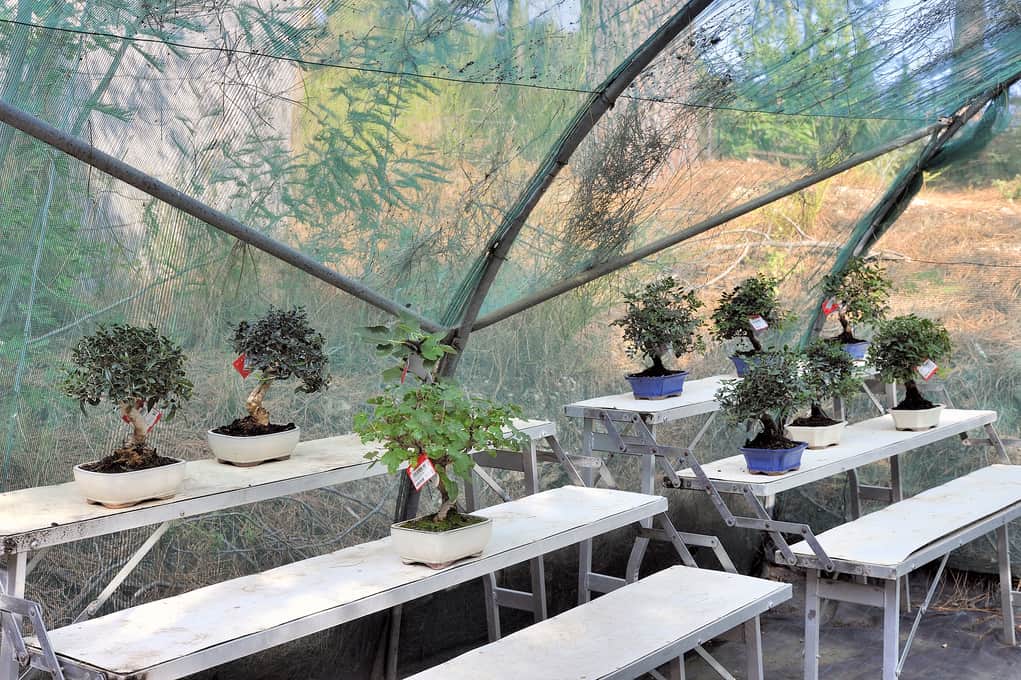
Wires are also used to connect a branch to another object (eg another branch, the pot itself), so that tightening the wire applies force to the branch.
Some species do not lignify strongly and the branches of some specimens are too stiff or brittle to bend easily.
These cases are not conducive to wiring, and their conformation is mainly done by pruning.
Subjection
For larger specimens, or species with stiffer wood, bonsai artists also use mechanical devices to shape the trunks and branches.
The most common are screw clamps, which can straighten or bend a part of the bonsai using much greater force than wiring can provide.
To avoid damaging the tree, the clamps are tightened little by little and make their changes over a period of months or years.
Graft
In this technique, new growth material (usually a bud, branch, or root) is introduced into a prepared area under the bark of the tree.
There are two main purposes for grafting in bonsai. Firstly, some favorite species do not thrive as bonsai in their natural trunk and their trunks are often grafted onto sturdier trunks. Examples include Japanese red maple and Japanese black pine.
Second, grafting allows the bonsai artist to add branches (and sometimes roots) where they are needed to enhance or complete a bonsai design.
There are many applicable grafting techniques, none of them exclusive to bonsai, including branch grafting, bud grafting, string grafting, and others.
Defoliation
In certain deciduous bonsai, short-term dwarfing can be achieved by partial or total defoliation of the plant in the middle of the growing season.
Not all species can survive this technique. When defoliating a healthy tree of a suitable species, most or all of the leaves are removed by clipping part of the petiole of each leaf (the thin stem that connects a leaf to its branch).
The petioles dry and subsequently fall or are manually removed once dry.
The tree responds by producing new leaves.
The new leaves are usually much smaller than those of the first harvest, sometimes up to half their length and width. If the bonsai is exposed at this time, the smaller leaves greatly contribute to the aesthetics of the dwarfing bonsai.
This change in leaf size is usually not permanent, and the following spring’s leaves are usually the normal size. Defoliation weakens the tree and should not be done in two consecutive years.
Bibliographic references
- Design and construction of a prototype for temperature and humidity control of a bonsai tree nursery, LM Tapia Espinoza, DE Zapata Freire – 2012 – bibdigital.epn.edu.ec
- Art and Technique in Bonsai, C Pessey – 1996 – books.google.com
- The giant bonsai, L Baquedano – 1992 – ecat.server.grupo-sm.com
- New ways to enjoy bonsai, S Kuribayashi – Niponica: discovering Japan, 2015 – dialnet.unirioja.es
- Bonsai Guide, G Owen – 1998 – sidalc.net
- The bonsai collection in the Barcelona Botanical Garden, JJP Gómez, DB Chavarría – El/0 botânico: AIMJB Magazine, 2011 – dialnet.unirioja.es


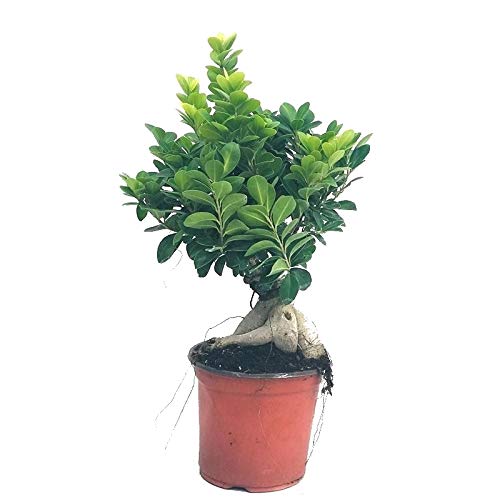
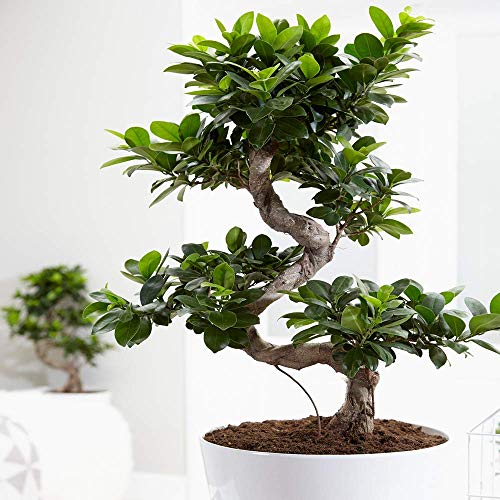

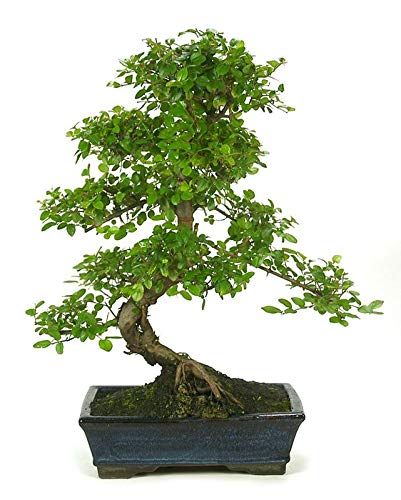
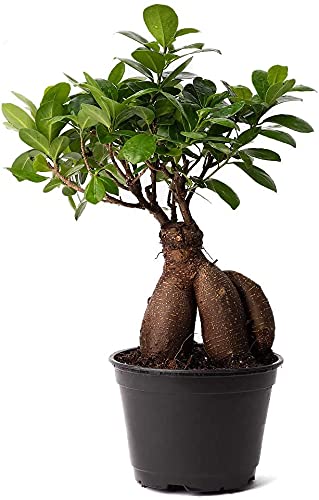
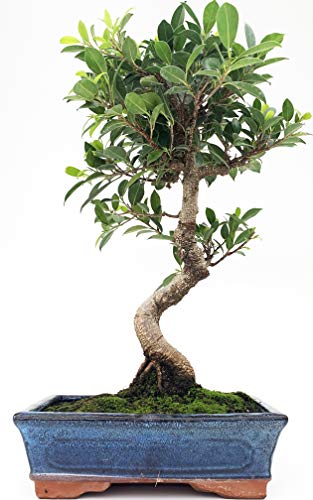
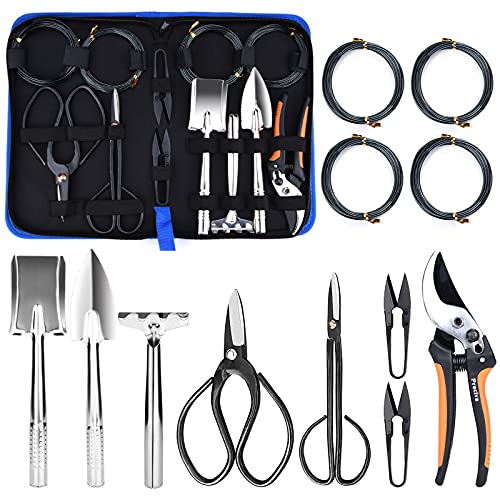
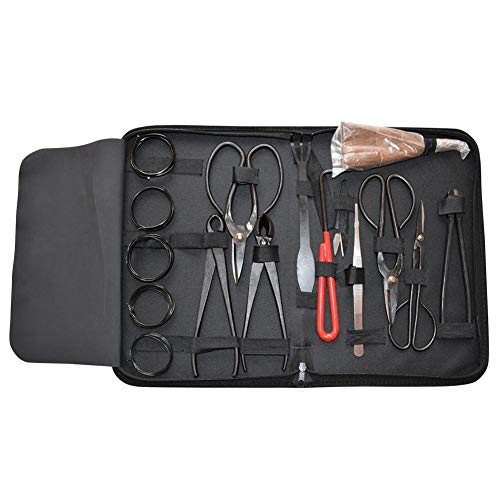
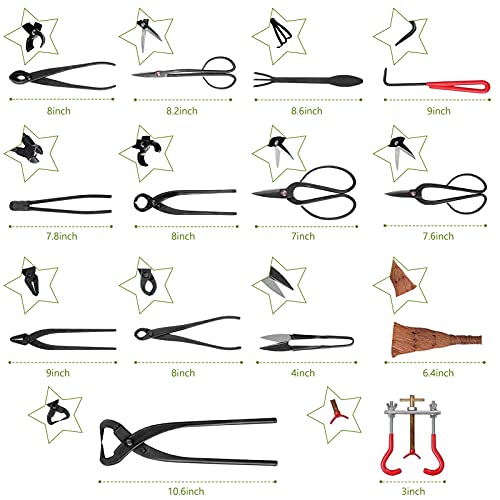

![Photo of Prune Begonia: [Importance, Time, Tools, Considerations and Steps]](https://www.complete-gardening.com/wp-content/uploads/2022/08/prune-begonia-importance-time-tools-considerations-and-steps-390x220.jpg)
